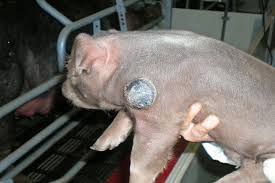


Goat milk and cheese have gained popularity due to their unique taste and health benefits. Producing goat milk and cheese can be a rewarding venture, whether you’re looking to start a small farm or expand an existing one. This guide will walk you through the basics of goat milk and cheese production, including choosing the right goats, managing their care, and understanding the cheese-making process.
Read more related: Cultivation Guide of Birch Tree in Home Garden
Choosing the Right Goats
The first step in goat milk and cheese production is selecting the right breed of goats. Different breeds produce varying amounts of milk, and the quality of milk can differ as well.
Alpine Goats: Known for their high milk production, Alpines are a popular choice among dairy goat farmers. They are adaptable to various climates and have a friendly temperament.
Saanen Goats: These are one of the largest dairy goat breeds and are also high milk producers. Saanens are known for their calm demeanor.
Nubian Goats: Nubians produce milk with a higher butterfat content, which is excellent for cheese making. They are hardy and can adapt to different environments.
LaMancha Goats: Recognizable by their tiny ears, LaManchas produce milk with a good butterfat content and have a friendly nature.
Goat Care and Management
Proper care and management of your goats are crucial for high-quality milk production. Here are some key aspects to consider:
Housing: Goats need a clean, dry, and well-ventilated shelter to protect them from extreme weather conditions. Ensure the housing is spacious enough to prevent overcrowding.
Feeding: A balanced diet is essential for healthy goats and high milk yield. Goats should have access to fresh hay, clean water, and a mix of grains. Supplementing their diet with minerals and vitamins can also be beneficial.
Health Care: Regular veterinary check-ups, vaccinations, and parasite control are vital to keep your goats healthy. Pay attention to signs of illness and treat any issues promptly.
Milking: Establish a consistent milking routine. Milking twice a day is common practice. Ensure the milking area is clean, and practice good hygiene to avoid contamination.
Milk Production and Storage
Once your goats are healthy and well-cared for, you’ll start collecting milk. Here are some tips for efficient milk production and storage:
Milking Technique: Use gentle and consistent pressure while milking to avoid injuring the goats. Automated milking machines can be a good investment for larger operations.
Milk Storage: After milking, filter the milk to remove any impurities and cool it immediately to preserve freshness. Store the milk in stainless steel or glass containers in a refrigerator.
Cheese Making Process
Turning goat milk into cheese is an art that requires precision and patience. Here’s a step-by-step guide to making goat cheese:
Pasteurization: Heat the milk to 72°C (161°F) for 15 seconds to kill any harmful bacteria. This step is optional if you prefer raw milk cheese, but pasteurization ensures safety.
Cooling: Cool the milk to the desired temperature for cheese making, typically around 30°C (86°F).
Culturing: Add a starter culture to the milk. This culture contains beneficial bacteria that will ferment the milk and develop the cheese’s flavor.
Coagulation: Add rennet to the cultured milk to coagulate it. Rennet is an enzyme that helps the milk proteins form a solid curd.
Cutting the Curd: Once the milk has coagulated, cut the curd into small pieces. This allows the whey (liquid part) to separate the curd (solid part).
Cooking and Stirring: Gently heat the curds while stirring to encourage further whey separation. This step varies depending on the type of cheese you’re making.
Draining the Whey: Pour off the whey or use a cheesecloth to drain it. The curd should be firm but not too dry.
Types of Goat Cheese
Goat cheese comes in various types, each with its unique characteristics:
Fresh Chevre: Soft and spreadable, fresh chevre is typically consumed soon after it’s made.
Feta: A brined cheese that’s crumbly and tangy, often used in salads.
- Aged Goat Cheese: Harder and more intense in flavor, aged goat cheeses can be stored for months and are great for grating or slicing.
Shaping and Pressing: Place the curd into molds and press it to remove any remaining whey and give the cheese its shape.
Salting: Salt the cheese to enhance its flavor and act as a preservative.
Aging: Some cheeses require aging to develop their flavor and texture. Store the cheese in a cool, humid environment for the desired aging period.
Conclusion
Goat milk and cheese production can be a fulfilling and profitable endeavor. By selecting the right goat breeds, providing excellent care, and mastering the cheese-making process, you can produce high-quality products that appeal to a wide range of consumers. Whether you aim to start small or scale up your operation, the key is to maintain high standards of cleanliness, health, and quality throughout the production process.



